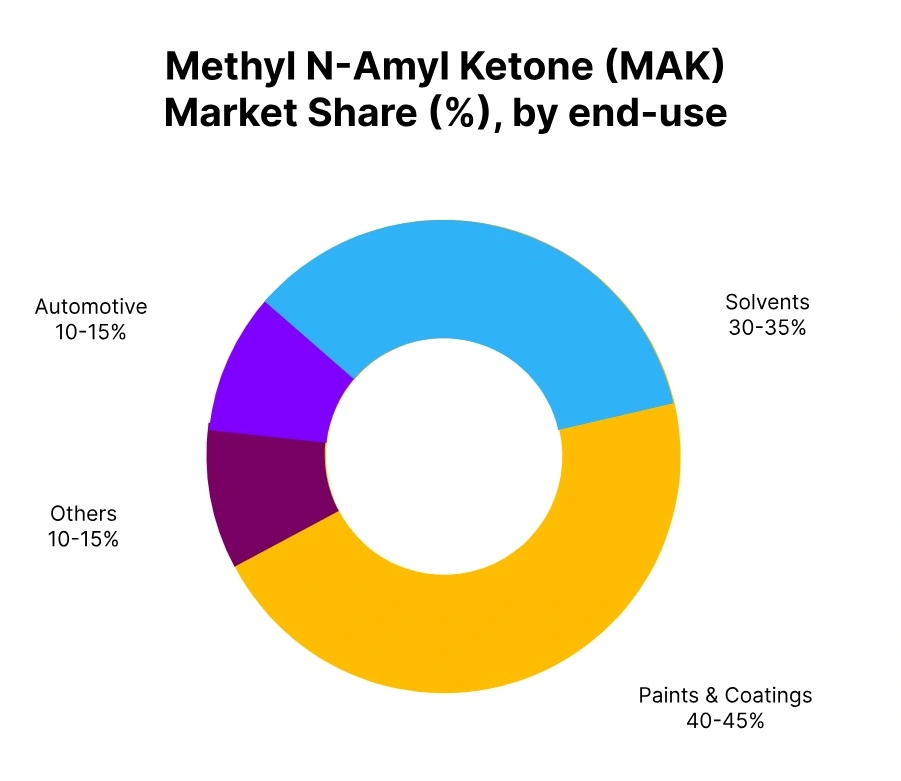Price-Watch’s most active coverage of Methyl N-Amyl Ketone (MAK) price assessment:
- IG (99% min) FOB Houston, USA
- IG (99% min) CIF Santos (USA), Brazil
- IG (99% min) CIF Nhava Sheva (USA), India
Methyl n-Amyl Ketone (MAK) Price Trend Q3 2025
In Q3 2025, the global MAK (Methyl n-Amyl Ketone) price trend stayed relatively stable, with a slightly positive movement observed across key markets. The overall MAK price was supported by steady demand from downstream industries such as coatings, adhesives, and industrial solvents, alongside controlled supply.
Despite moderate cost support from upstream alcohols and ketones, the market kept a balanced tone, with most producers opting for steady pricing strategies. Looking ahead, if demand continues to hold and supply remains tight in select regions, MAK prices may retain their slight upward bias into the next quarter.
USA
MAK Export prices FOB Houston, USA, Grade- Industrial Grade (99% min).
According to PriceWatch, in Q3 2025, MAK (Methyl n-Amyl Ketone) price trend in USA stayed relatively stable, with a slight positive movement observed toward the end of the quarter. The MAK price in USA held firm through most of the quarter, supported by stable demand from coatings and industrial solvent sectors, along with balanced domestic supply. MAK price in September 2025 in U.S. Gulf region edged up modestly, driven by strong export interest and stable feedstock costs.
Although market fundamentals remained largely unchanged, the consistent demand and controlled production levels helped maintain a slight upward bias in the global MAK price, with expectations of continued stability into the next quarter.
Brazil
MAK import prices CIF Santos, Brazil, Grade- Industrial Grade (99% min).
In Q3 2025, MAK (Methyl n-Amyl Ketone) price trend in Brazil remained relatively stable, with a slight positive movement noted across some trade lanes. The MAK price in Brazil from USA reflected this modest firmness, as steady demand from downstream coatings and industrial sectors in Brazil supported consistent import activity. Although MAK FOB prices in the U.S. remained mostly unchanged, minor increases in freight costs and stronger local demand contributed to a slight rise in landed costs.
In September 2025, MAK price in Brazil showed a small upward adjustment, underpinned by balanced supply conditions and steady export flows from the U.S. Gulf Coast. Overall, the global MAK price remained resilient, with producers maintaining stable offers amid careful buying and limited inventory pressure, keeping the price trend tilted slightly positive heading into Q4.
India
MAK Import prices CIF Nhava Sheva, India, Grade- Industrial Grade (99% min).
According to PriceWatch, in Q3 2025, the MAK (Methyl n-Amyl Ketone) price trend in India showed a moderate increase of 2 to 3%, primarily driven by currency fluctuations, despite relatively stable MAK FOB values from key exporting regions such as the U.S. and Europe. The MAK price in India moved slightly upward as the Indian Rupee weakened against the U.S. Dollar, increasing the effective landed cost for importers.
This upward shift in India MAK CIF prices in September 2025 became more noticeable, even though underlying supply-demand dynamics remained balanced, with steady consumption from the coatings and adhesives sectors and adequate global availability. The slight price gain was less about tight fundamentals and more influenced by exchange rate volatility, highlighting how external macroeconomic factors continue to shape regional MAK price movements.


